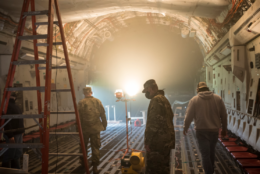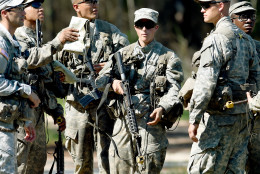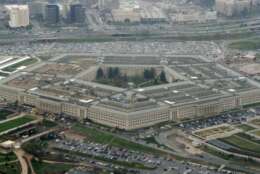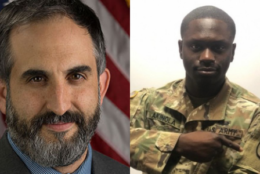Defense
-
Debris orbiting the Earth is getting out of hand and the military thinks businesses can help solve the problem.
November 18, 2020 -
Navy vessels stay consistently in maintenance bays longer than scheduled. Navy cites lack of shipyard capacity as one reason. But there's more according to the Government Accountability Office.
November 18, 2020 -
The service is built a 7,000 square foot facility to create solar arrays and folding antennae.
November 17, 2020 -
This program provides a progress report on defense and homeland cloud computing.
November 16, 2020 -
Defense contractors are or should be busy putting together self-assessments of their cybersecurity. Under the Cybersecurity Maturity Model Certification program, those self-assessments are due at the end of the month.
November 16, 2020 -
A year-long study by the Defense Health Board suggests the Pentagon is not providing proper medical care to women, wasting money and hurting retention and readiness.
November 16, 2020 -
In today's Federal Newscast, Rep. Barbara Lee (D-Calif.) and Mark Pocan (D-Wis.) warn that appointing former industry heads could cause bloated military budgets.
November 13, 2020 -
The Navy demonstrably accelerated shipyard maintenence in 2020, but still won't meet its goal of zero delays in 2021.
November 13, 2020 -
Air Force Aid Society announced this year the appointment of the 18th Chief Master Sergeant of the Air Force (CMSAF) Kaleth O. Wright as the new CEO.
November 12, 2020 -
Those who spent decades in the military will see a modest COLA increase as coronavirus pandemic continues.
November 12, 2020 -
Caucus member and Texas Republican Brian Babin joined Federal Drive with Tom Temin to talk about some of the issues the caucus plans to work on.
November 12, 2020 -
No, people who are about to leave government should not be "canceled."
November 11, 2020 -
For the highlights, the museum's Chief of Exhibits Paul Morando, and Sgt. James Akinola, visiting soldier and the Army's soldier of the year, joined Federal Drive with Tom Temin.
November 11, 2020 -
The Army is using machine learning to build a retention prediction model, which determines the likelihood of personnel staying in the service.
November 11, 2020 -
The combatant command is trying to bring in more data to make a workable grid for the new command and control platform.
November 11, 2020
















